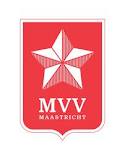|
Stars are polygons with pointed parts.
On this page the simple stars are described.
A separate page is dedicated to the nonsimple
star polygons.
The line star is described together with the straight
line.
When the points meet each
other at equal angles, the star is a regular star.
The form of a regular star is defined by the number of angles (call it: n) and the
ratio (call it: a) of the minimum
distance to the center and the length of a point.
We call this a n-pointed star, and you can
see it as a regular 2n-polygon, where the even angles have been pulled inside,
along the same distance.
Some examples:
- 3-pointed star: the regular three-pointed star can be found as the Mercedes
star of the car of the same name. Their competitor CitroŽn used two of the three
points.
  
- 4-pointed star: sometimes we see the regular 4-pointed star as a Christmas star
(also found as a 5-pointed or a 8-pointed star),
referencing to the star occurring in the story of the birth of Jesus in the
Bible.
 
- 5-pointed star: the regular five-pointed starfish walks over the sea-bottom (but there are
sorts with more arms, sometimes up to fifty). And the Dutch football team of MVV carries the sea-star as its emblem.
The Esperanto movement uses the star as its logo, each of the five edges stands for a continent.
By lengthening the sides into the inside of the star we get the pentagram.
For the Greek Pythagoras it was the symbol of health. Later on the pentagram became the
symbol of the medieval master builders.
    
  6-pointed star 6-pointed star
  8-pointed star 8-pointed star
The Koch star is a fractal.
|






